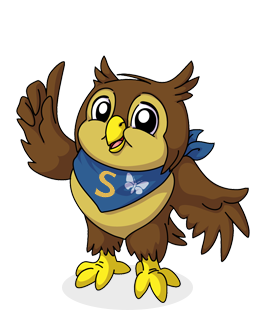Writing
Activity 8: Let’s look at a model poem
Below is a poem written by Pie Corbett using The City of Silence game called The Cave of Curiosity. It is a great example of a poem using a repetitive pattern; this time he starts each verse with the phrase: In the cave of curiosity. We are going look closely at this poem and write some responses.
★ Start by reading the poem out loud a few times. You can also listen to a reading of the poem here:
https://soundcloud.com/talkforwriting/city
The Cave of Curiosity
In the cave of curiosity, I created
an angry ant ambling along,
a terrified tarantula tickling a tornado
and a curious computer calling cautiously to the King.
In the cave of curiosity, I created
the sound of silence closing its lips,
a hummingbird’s wings flickering,
as the sea silently scrapes the pebbles and ten tired lorries trundle by.
In the cave of curiosity, I created
the touch of smooth stones from the summer beach,
the stickiness of honey on a fingertip
and the heat from a teaspoon as it stirs my morning tea.
In the cave of curiosity, I created
the coldness of frost as it freckles the windowpane,
the sharpness of a saw as it crunches through wood
and the sadness of a tear as it trickles down a cheek.
In the cave of curiosity, I captured
the moon’s cold gleam imprisoned in a box,
the joy of a merry-go–round as it spins like a feral ferris wheel
and the force of a rainbow as it dazzles the sky with a smile that
stuns.
© Pie Corbett
★ Now let’s look at the poem closely and try to respond to what we have
read.
1) Which is your favourite word, line or verse? And why?
———————————————————————————————-
2) Which line would you like to change? What would you change it to?
———————————————————————————————-
3) Which parts of the poem did you find scariest, saddest, most unusual?
———————————————————————————————
4) Find a part of the poem that uses alliteration really effectively.
———————————————————————————————-
5) Write Pie a short piece of feedback about his poem. It could follow this
structure: 1. Give some praise 2. Offer some advice 3. Ask a question
Finally, did you notice that the last verse began with the line, In the cave of curiosity, I captured…?
Write two more verses that begin in the same way. Think about what you could capture. It could be a physical thing such as an animal or object; it could be a sound or an image; you could even capture a scent or an aroma. Choose your vocabulary very carefully. Below is an example of just one idea:
In the cave of curiosity, I captured
The triumphant echoes of a troup of trumpets
Ricocheting off the cavernous rocky ceiling.
When you’ve written your verses, read them through and improve them if you can.
Arithmetic
Time yourself answering these mental arithmetic questions. They all involve addition so I’ve given you more than usual! The time limit is 15 minutes.
1.Add together 50, 60 and 30.
2. What is the total of 25, 17 and 33?
3.Georgina was given some money for Christmas. Her brother gave her £3.50, her sister gave her £2.00 and her grandma gave her £2.50. How much did she get in total?
4.Amit collects 66 first class stamps and 22 second class stamps. How many stamps does he have in total?
5.Caroline has two sacks of apples in one there are 43 apples – in the other there are 59. How many are there altogether?
6.What is the sum of 46, 30 and 75?
7.Samir buys three chocolate bars. A Mars that cost 82p, a Snickers that cost 39p and a Milky way that cost 50p. How much did he spend in total?
8.A teacher gives out 14 worksheets on Monday, 28 on Tuesday and 27 on Thursday. How many worksheets did she give out in total?
9.If Malcom gets given £4 a day, will he have enough to buy a £30 football kit by the end of the week?
10.What is 138 + 567?
11.Add together 37, 21, 46 and 43.
12.Which is more? 35 + 18 or 44 + 1
13.Paul was given some money for his birthday. His brother gave him £1.54, his sister gave him £1.53 and his grandma gave him £5.25. How much did he get in total?
14.Anita collects 122 bus tickets, 62 cinema tickets and 24 train tickets. How many tickets does she have in total?
15.What is the sum of 134, 76 and 152?
16.Leon buys three tubs of ice cream. Caramel Fudge costs £1.58, Marshmallow Fudge Chunk costs £1.36 and Mint Madness costs £1.53. How much did he spend in total?
17. 7. 45 + 87 = 99 + ?
18.If there are 1456 people at the rugby match and 997 leave towards the end, how many people remain at the match?
19. What is the most you can add to 332 without creating a 4 digit number?
20.Which is closest to 100? 35 + 55 or 11 + 78
Maths No Problem
Chapter 14 Lesson 5. Complete the following tasks based on the In Focus section on page 228. Don’t look at the Let’s Learn section until you have completed the tasks.
Put the information into a table.
Draw a pictogram to represent the information.
Draw a colour bar model to represent the information.
Use the bar model to:
Draw a bar graph to represent the information and to…
Draw a pie chart to represent the information.
Now go through the Let’s Learn section on pages 229-231. How do your tables, graphs and charts compare with those in the textbook?
Take your time over this and compare them carefully. Have you used a different scale on any of the graphs?
Re-draw any of the graphs or charts that you feel you could have done better.
Have a go at redrawing one of the graphs using a different scale. For instance each square in your bar graph doesn’t have to represent one t-shirt, it could represent 2, 3 or even 4. Choose a suitable scale.
Topic
Watch this video at BBC Bitesize about Mayan farming and food.
https://www.bbc.co.uk/bitesize/topics/zq6svcw/articles/zd844qt
The Maya civilisation existed in Mexico. Find out as much as you can about Mexican food. What did the Maya eat and what do modern day Mexicans eat? Now imagine you are opening a Mexican restaurant. What types of dishes will you serve your customers? Think up a name for your restaurant and design a menu. Since your customers may not be familiar with the dishes you’ll need to include a brief description of each dish on the menu as well as a price. Think about how you will divide up the dishes on your menu e.g. starters, main courses, vegetarian etc. Think about what else you may need to include on a menu e.g. information about allergies etc. Make your menu as attractive as possible and make sure it reflects the Mexican theme of your restaurant. Have fun and try not to get too hungry while you’re designing it!



